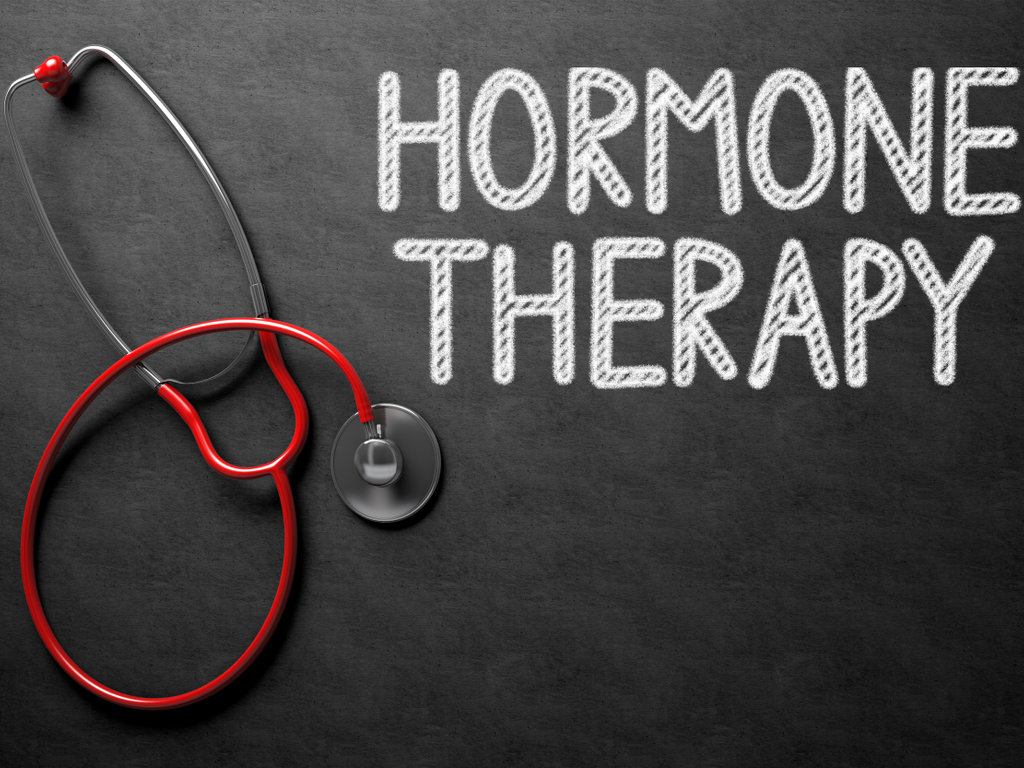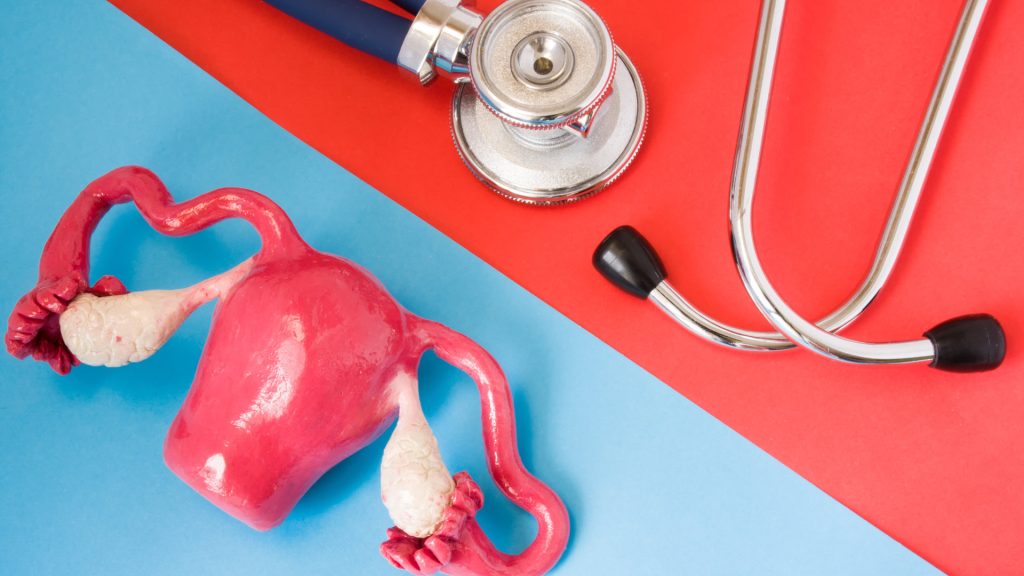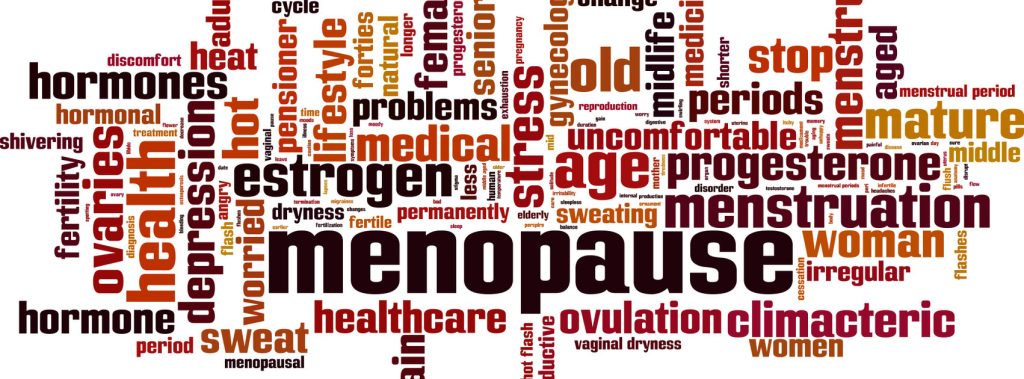
Menopause is a normal part of the aging process for women. Most experience menopause by the time they turn 50-55 years old and it’s characterized by a full year (12 months) without menstrual bleeding. Menopause can also occur if you have your ovaries surgically removed.
The ovaries are responsible for producing eggs (oocytes) and female reproductive hormones (estrogen and progesterone). As females age, production slows down and eventually comes to a stop. This is when menopause begins and marks the end of the female’s reproductive years.
During menopause, women often experience a range of physical changes and symptoms as a result of the hormonal changes. Some of the most common symptoms include hot flashes, cold flashes, vaginal dryness, mood changes, sleeping issues, weight gain, and breast tenderness.

What is Hormone Therapy for Women?
Hormone therapy (HT), also known as hormone replacement therapy (HRT), is the process of using medication to replace the hormones (estrogen and progesterone) typically lost during perimenopause, menopause, and postmenopause. Most women can benefit from HRT.
By regulating these hormone levels, women can expect a reduction in the majority (if not all) of their menopause symptoms. This is essential to living a happy, healthy, and rewarding life as you age – especially considering menopause often begins in a woman’s late-40s or early-50s.
For those that are entering or have already entered menopause, hormone replacement therapy can reduce symptoms and help you regain control of your life once again. While it can help a lot of women in their later years, it’s not for everyone. Discuss with your doctor before giving it a try.

Different Types of Hormone Therapy for Women
The two primary hormones that need to be replaced during menopause are estrogen and progesterone. Women that still have their uterus will need a combination of estrogen and progesterone, while women that have had their uterus removed will only need estrogen therapy.
For those that need estrogen replacement therapy, there are two basic types of hormone replacement therapy – systemic hormone therapy and low-dose vaginal products. Systemic estrogen comes in a higher dose and is usually available in pills, creams, rings, tablets, patches, and sprays.
On the other hand, low-dose vaginal products come in a lower dosage and are used to treat the vaginal or urinary symptoms of menopause. These types of estrogen products are available in creams, tablets, and vaginal ring form. Your doctor will determine which one is best for you.
Again, if you haven’t had your uterus removed, your doctor will likely prescribe progesterone or a progesterone-like (progestin) medication alongside the estrogen. It all depends on the person.

Are There Other Uses for Hormone Therapy?
Hormone therapy has become an extremely popular option for women going through or about to go through menopause, but that’s not the only reason why hormone therapy is used. There are several other reasons why your doctor might recommend HRT, though they are more rare.
For example, hormone replacement therapy is sometimes used to prevent osteoporosis, initiate puberty in some females, to enhance the gender transition process, relieve cancer symptoms, and treat infertility. You should speak with your doctor before undergoing hormone therapy.

Benefits & Risks of Hormone Replacement Therapy
It doesn’t matter who you are or what you do, all women will eventually experience menopause and with that often comes menopause symptoms. If you’re someone who finds the symptoms hard to cope with as they deplete your quality of life, hormone therapy might be right for you.
Let’s take a look at some of the benefits of hormone therapy for women:
- A great reduction in menopausal symptoms commonly experienced before, during, and after menopause.
- Reduced risk of broken bones and lower risk of developing osteoporosis.
- Improved sense of well-being and overall greater mood on a daily basis.
- Reduced risk of colon cancer and diabetes.
- Reduction in tooth loss and improved overall dental health.
- Reduced joint pain, especially as you grow older.
- Lowered risk of dying in women that are older than 50.
With that said, hormone replacement therapy isn’t for everyone. You should avoid hormone therapy if you have/had breast cancer, endometrial cancer, abnormal vaginal bleeding, blood clots, cardiovascular disease, liver disease, or if you’re pregnant. There are also some risks:
- Increased risk of endometrial cancer if you still have your uterus and are only taking estrogen (not progesterone).
- Increased risk of blood clotting, stroke, and other heart complications.
- Increased risk of developing gallstones and having other gallbladder problems.
- Increased risk of dementia if replacement therapy starts after a woman’s midlife.
- Increased risk of breast cancer if hormone replacement therapy is taken long-term.
Some of the common side effects you can expect with hormone therapy include monthly bleeding, irregular spotting, breast tenderness, mood swings, fluid retention, headaches, skin discoloration, increase in breast density, and skin irritation. Always mention these to your doctor.

How to Reduce the Risks of Menopausal Hormone Therapy
Hormone replacement therapy involves the use of medication to regulate and normalize the levels of estrogen and/or progesterone in the female body. Much like any other medication on the market today, HRT doesn’t come without side effects and risks – like we explained above.
In order to reduce those risks and side effects, here are some of our most prominent tips:
- Never undergo hormone replacement therapy without first receiving the ‘okay’ from your primary doctor.
- Always make sure you’re taking a trusted and proven brand.
- There are a lot of different types and delivery methods, so choose the one that works best for you.
- Never take more than what you need. In fact, it’s best to minimize the amount of HRT to reduce long-term risks.
- Schedule a regular follow-up appointment with your doctor or hormone specialist to better monitor your results.
- Make sure you’re eating a healthy diet, exercising regularly, and making healthy lifestyle choices to promote better health overall.
Are you having a hard time coping with the physical changes and symptoms experienced during menopause? Do you think you’re a good fit for hormone replacement therapy? If so, then you’ve come to the right place. At Hormone Clinic, we take pride in helping you find long-lasting relief.
To learn more about our services and discuss your symptoms with a hormone specialist, contact Hormone Clinic today. We can’t wait to meet you and improve your quality of life!
Leave a reply








Most Commented